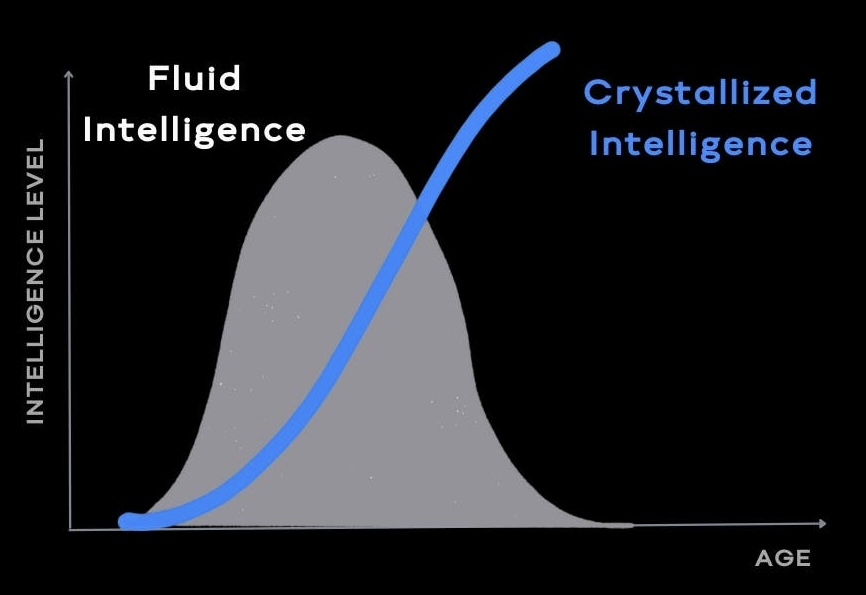
- The theory of Fluid vs. Crystallized Intelligence was developed by psychologist Raymond Cattell in the 1970s. [1]
- 年輕時依賴流體智力,隨著年齡增長逐漸發揮晶體智力。
「流體智力」(Fluid Intelligence, Gf)
- 流體智力指邏輯推理、靈活思考以及解決新問題的能力,通常在成年早期達到高峰,30 至 40 歲後開始下滑。
- It is characterized by the ability to think creatively and abstractly, learn new concepts, draw flexible connections, and reason across different domains.
- Fluid Intelligence represents the intelligence of youth. It peaks during the early stages of one’s career—generally in the 20s and 30s—and begins to decline thereafter. Many groundbreaking innovations stem from Fluid Intelligence, which explains why a significant proportion of such achievements come from individuals in the early stages of their careers.
「晶體智力」(Crystallized Intelligence, Gc)
- 晶體智力指運用累積知識、經驗、技能與洞見的能力。隨著年齡增長,晶體智力在 40 至 60 歲期間持續提升,直到晚年才逐漸下降。這也是為什麼許多年長者彷彿成為智慧的寶庫。
- It is characterized by the ability to leverage accumulated knowledge, experience, skills, and insights.
- Crystallized Intelligence represents the intelligence of experience. It begins to rise as Fluid Intelligence declines, with the compounding accumulation of knowledge accelerating during later career years.
[1]
Brooks AC. From Strength to Strength: Finding Success, Happiness, and Deep Purpose in the Second Half of Life. New York: Penguin Publishing Group; 2022.